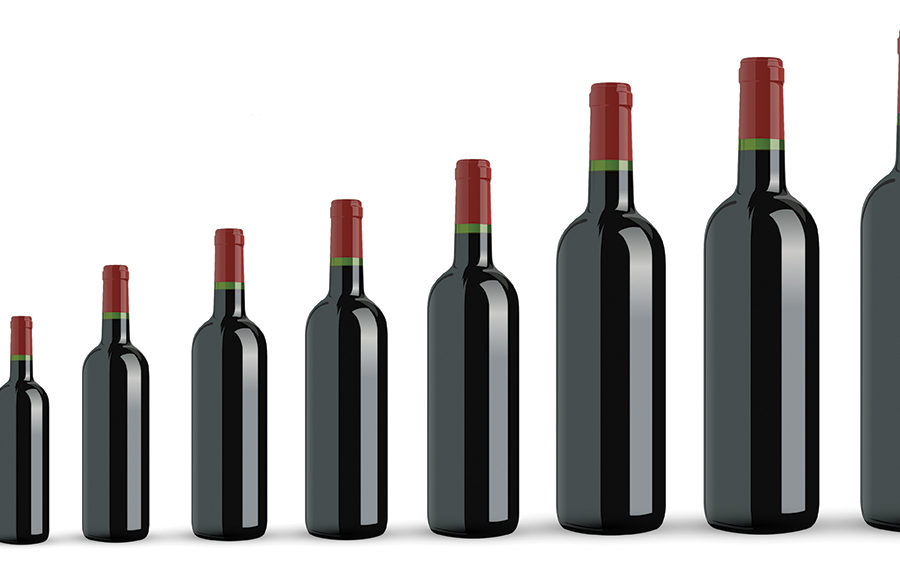
Size matters
Wine is for sharing. I’ve said that many times in my past columns. How many of us drink a special bottle alone, or for that matter, a simple utility wine unaided and unabetted? Hardly any of us, unless we are lucky enough to own a Coravin, a special device that permits us to pour a glass without actually opening a bottle. After a long day at the office, we open that standard-size 750 ml bottle that gives us between four and five glasses from 6-ounce pours, which is more than generous. Good for sharing between two people. Hopefully, by night’s end, we are staring down the barrel of an empty bottle, but sometimes not. And what about all those dinner parties, hosted for several of our special guests? Clean-up time can discover a bottle or two that reveals a heartbreaking amount of that red or white libation begging to be finished but generally enjoyed by the drain of a different throat—the sink. Blasphemous!
So, how are we assured, beyond that Coravin savior, of those perfect amounts for the perfect time we are in either small or large group settings without waste? Simply recorking good wines to save for another time is not the answer. The answer is knowing the precise size bottles to open for that specific occasion. Let’s explore what formats are offered and the proportions of these beauties.
When size matters, such as knowing what wine bottle to open given the number of those imbibing, there are several different offerings to choose from that are not all that familiar, since we are normally exposed to the typical 750ml bottle.
You may not be aware, for example, that the wine industry manufactures many large formatted bottles, the largest of which holds 40 of the standard-size bottles! (Not to mention another way to store wine–in boxes.) There are actually two bottle sizes smaller than the standard-size we are familiar with, namely a half bottle and a split size. This split size pours one glass, while half-size pours two. How many of us would open up that half-size if it was available on the wine store shelves when drinking alone? Just the right size when one is perhaps dining alone while your significant other is not at home. This bottle serves up about two 6-ounce pours. Right size, right?
What about those dinner size parties being thrown on a Saturday evening? How impressive is it to display on the dining room table a Magnum or Jeroboam, two of the more popular larger formats? Rather than opening up several standard-size bottles, uncorking just one that holds two to four of these 750ml vessels would take your guests by surprise, adding an element of “oohs” and “aahs” like no other while showing off the talent of decanting from such a large format. Knowing your party size would not only allow for that quintessential perfect pick but would make it an extremely fun and conversational evening without any waste at the night’s end.
Some other available but difficult to locate larger size vessels are the Methuselah, Salmanazar, Balthazar and the Nebuchadnezzar, to name a few. These beauties hold 8, 12, 16 and 20 standard-size bottles. Keep in mind that the larger formatted bottles will need more than one person to lift, but oh, what fun!
Interestingly, these wine bottle sizes have specific, unique names inspired by Biblical characters: Jeroboam is known as the “First King of The Kingdom,” Methuselah is the man who lived the longest in the Bible, Salmanazar is nicknamed “One of the Wise Men,” and Nebuchadnezzar is typically called “King of Babylon.” Very cool.
I would be remiss if I didn’t expose some additional advantages and disadvantages of these larger formats. Larger wine bottle sizes allow wines to age more slowly resulting from the smaller amount of air that resides there relative to the amount of wine that is exposed, thus dramatically changing the taste of wine over its smaller 750ml sisters. This surface-to-air ratio is called ullage. Simply stated, the better this ratio, the lesser probability of spoilage, or accelerated aging. Larger formats have thicker bottles, which will keep temperature variations down, a big advantage over smaller sizes, for sure. These steady temperatures can allow the wine to age better. But larger is not always better. Extremely large-sized bottles such as the Balthazar require custom hand-made corks that could lead to imperfect seals, resulting in a greater amount of oxidation and possible spoilage.
So, next time you are surfing for that perfect wine, consider the number of those imbibing, then look to those options that’ll most closely assure every drop will be enjoyed. After all, in this very important matter, one size does not always fit all.

